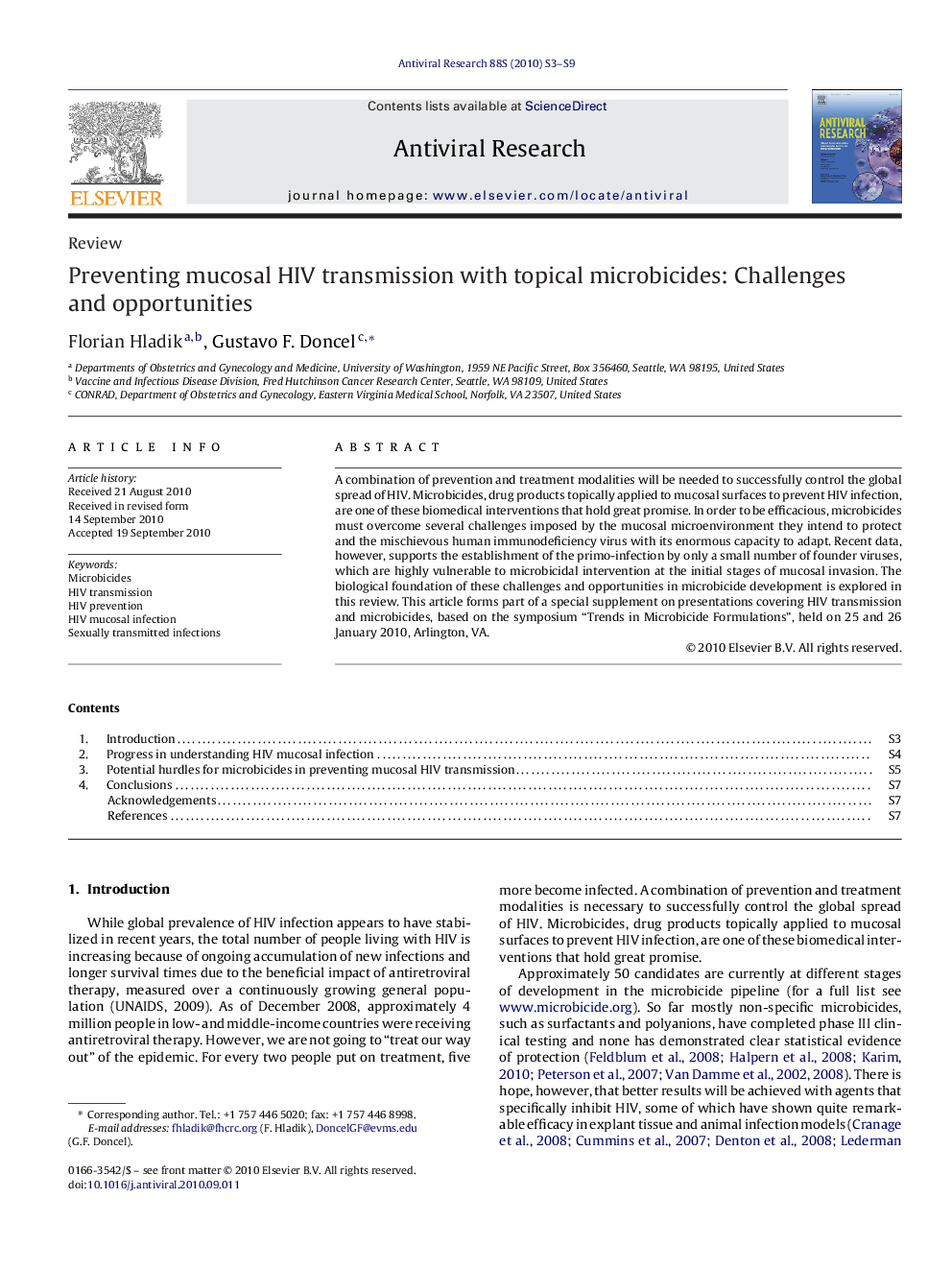| Article ID | Journal | Published Year | Pages | File Type |
|---|---|---|---|---|
| 2510822 | Antiviral Research | 2010 | 7 Pages |
A combination of prevention and treatment modalities will be needed to successfully control the global spread of HIV. Microbicides, drug products topically applied to mucosal surfaces to prevent HIV infection, are one of these biomedical interventions that hold great promise. In order to be efficacious, microbicides must overcome several challenges imposed by the mucosal microenvironment they intend to protect and the mischievous human immunodeficiency virus with its enormous capacity to adapt. Recent data, however, supports the establishment of the primo-infection by only a small number of founder viruses, which are highly vulnerable to microbicidal intervention at the initial stages of mucosal invasion. The biological foundation of these challenges and opportunities in microbicide development is explored in this review. This article forms part of a special supplement on presentations covering HIV transmission and microbicides, based on the symposium “Trends in Microbicide Formulations”, held on 25 and 26 January 2010, Arlington, VA.
